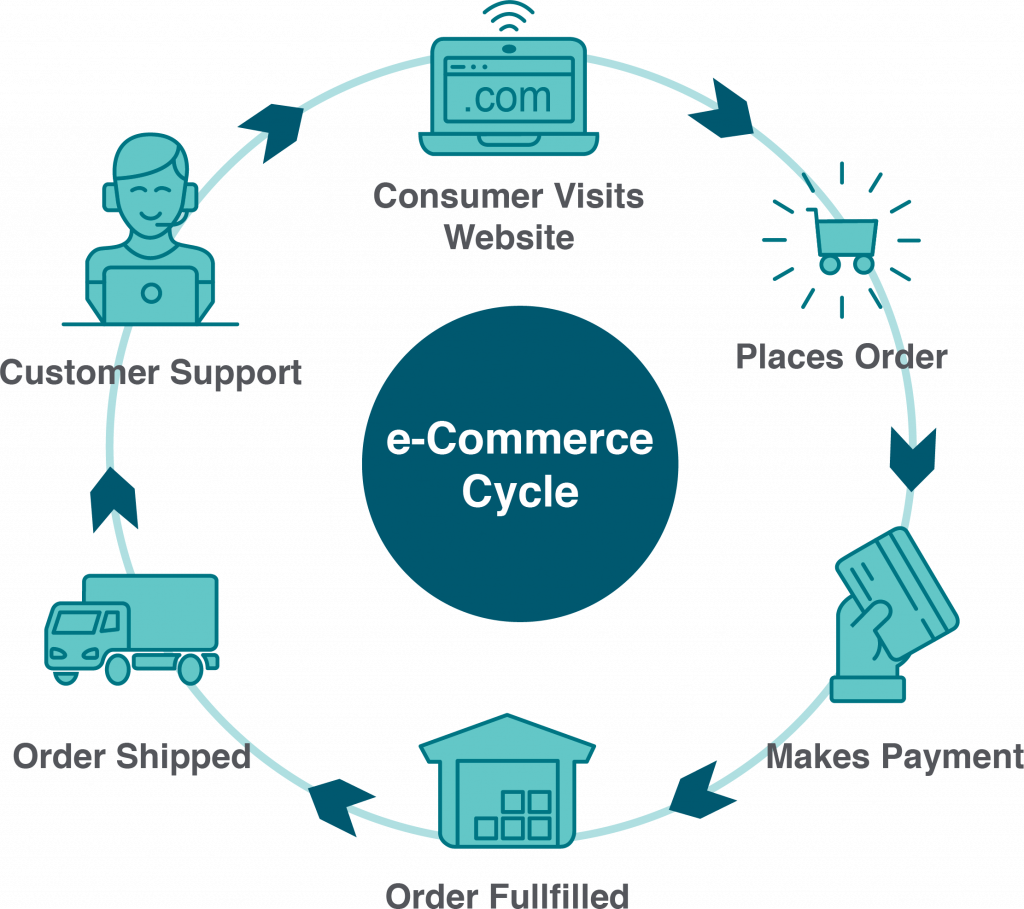10.6. E-Commerce Models
An e-commerce business model is the method that a business uses to generate revenue online. E-commerce can take on a variety of forms involving different transactional relationships between businesses and consumers.
| Retail | The sale of a product by a business directly to a customer without any intermediary. |
| Wholesale | The sale of products in bulk, often to a retailer that then sells them directly to consumers. |
| Dropshipping | The sale of a product, which is manufactured and shipped to the consumer by a third party. |
| Crowdfunding | The collection of money from consumers in advance of a product being available in order to raise the startup capital necessary to bring it to market. Example: Kickstarter |
| Subscription | The automatic recurring purchase of a product or service on a regular basis until the subscriber chooses to cancel. Examples: newspaper subscriptions, music streaming sites (Spotify) |
| Transaction Brokers | Companies who facilitate a transaction and take a portion of the revenue. Example AirBnb, EventBrite |
As well e-commerce can involve different objects being exchanged as part of these transactions.
| Physical products | Any tangible good that requires inventory to be replenished and orders to be physically shipped to customers as sales are made. |
| Digital products | Downloadable digital goods, templates, and courses, or media that must be purchased for consumption or licensed for use. For example, maybe you take a digital course online through LinkedIn Learning. |
| Services | A skill or set of skills provided in exchange for compensation. The service provider’s time can be purchased for a fee. |
The Business to Consumer Cycle

In the B2C e-commerce cycle a customer visits a website and peruses the products offered. They choose a product and place an order which then gets added to their online shopping cart. Once they have completed their selection, they navigate to their shopping cart and choose a shipping address and make a payment. Payment options are explored in detail later in the chapter.
On the other end, the business fulfills the order and prepares it for shipping. The order is then shipped, and the customer is notified of this step. The customer can follow up with customer service if there are any issues with the order or shipment. The customer is also sometimes asked to provide a review of the product so that future potential customers can benefit from this experience. If a customer is unhappy with their product, they can reach out to customer service and explore their options. Some companies, like Amazon, allow customers to return their orders online, and a return label is automatically created for printing. The customer simply has to package the item and return it via Canada Post or another shipping company.
“What is Ecommerce?” by Shopify Business Encyclopedia is licensed under a Creative Commons Attribution 4.0 License unless otherwise noted.

